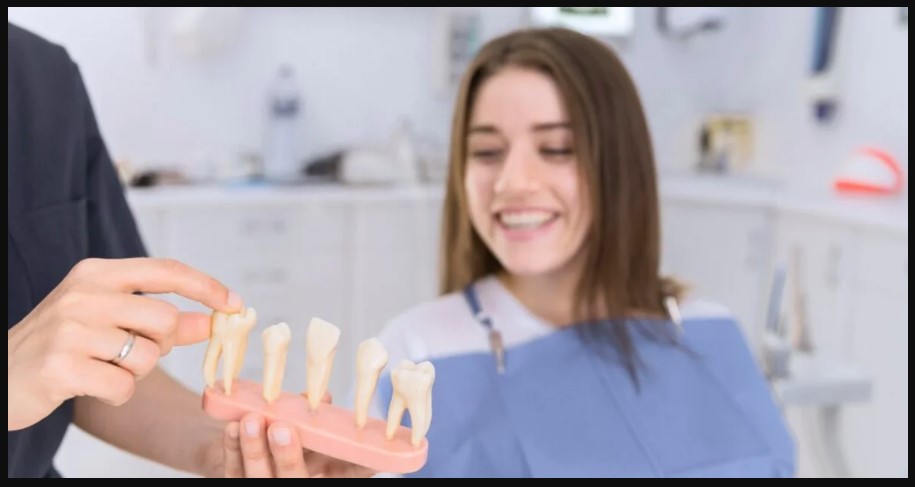Introduction
“Molarul” is a significant term in dental health and scientific research. In dentistry, molars are essential for effective digestion, oral health, and even facial structure.
On the other hand, in scientific research, particularly in molecular biology, Molarul refers to complex molecular structures that play vital roles in biological processes.
This article aims to provide a detailed exploration of Molarul from both perspectives, highlighting its importance, challenges, and the future trends shaping its study and application.
Understanding Molarul in Dental Health
Molars are large, flat teeth located at the back of the mouth. They are primarily responsible for grinding food, making them essential for proper digestion. The health of these teeth is critical, not just for chewing but also for maintaining the alignment of the teeth, supporting facial structure, and preventing other dental issues like overcrowding or misalignment (Techzype, Business Dicker).
Contents
The Anatomy and Function of Molars
Molars are typically divided into three categories: first molars, second molars, and third molars (commonly known as wisdom teeth). Each type of molar has a unique role in the digestive process.
The first molars erupt around the age of six and are crucial for establishing the bite.
The second molars, appearing around age twelve, reinforce this structure. Wisdom teeth, which emerge much later, often cause complications due to space constraints in the jaw, leading to impaction or misalignment (Techzype).
Molars are not only integral to chewing and grinding food but also play a significant role in speech. The proper molar function helps articulate certain sounds, contributing to clear communication.
Additionally, these teeth are vital in maintaining the facial muscles’ balance and the face’s overall aesthetics (Techzype).
Common Molar Issues and Their Impact
Molarul-related problems can range from cavities and tooth decay to more severe issues like fractures and infections.
If left untreated, these conditions can lead to significant pain, discomfort, and even systemic health issues. For instance, infections originating from molars can spread to other body parts, potentially leading to severe complications such as sepsis (Journal Roots).
Tooth decay in molars is particularly common due to their location at the back of the mouth, which makes them harder to clean.
The intricate grooves and pits on the surface of molars are also prone to trapping food particles and bacteria, leading to plaque buildup and, eventually, cavities (Business Dicker).
Preventive Care and Treatment Options
Preventing molar-related issues begins with maintaining good oral hygiene.
This includes brushing twice daily with fluoride toothpaste, flossing regularly to remove food particles between teeth, and using an antibacterial mouthwash to reduce the number of bacteria in the mouth.
Regular dental check-ups are crucial for early detection and treatment of emerging issues (Techzype, Journal Roots).
Advanced Treatment Options
When preventive care is not enough, and molar issues arise, several treatment options are available. For cavities and minor decay, dental fillings made of composite resin or amalgam can restore the tooth’s integrity.
Crowns might be necessary to protect the remaining tooth structure in severe decay or damage. Root canal therapy is another common procedure used to treat infected molars. In this procedure, the damaged or infected pulp is removed, and the inside of the tooth is cleaned and sealed (Amedia Time, Journal Roots).
For impacted wisdom teeth or severely damaged molars, extraction might be the only viable option. Post-extraction, dental implants or bridges can replace the missing teeth, ensuring the dental arch’s continued functionality and aesthetic appearance (Journal Roots).
Molarul in Scientific Research
Beyond its dental implications, “Molarul” also refers to complex molecular entities in the field of molecular biology.
These molecules are often involved in critical biological processes such as cellular signaling, gene expression, and metabolic regulation.
Understanding these molecules has far-reaching implications for the development of new therapeutic strategies and diagnostic tools(
The Discovery and Structure of Molarul
The discovery of Molarul molecules is rooted in decades of research across various scientific disciplines, including biochemistry and biophysics.
These molecules are characterized by their complex molecular architecture, which includes a diverse array of organic and inorganic components.
This complexity allows Molarul to interact with other molecules in highly specific ways, influencing various biological pathways(Amedia Time).
Biological Functions and Applications
Molarul molecules are involved in a myriad of biological processes. For example, they play a role in regulating gene expression, helping control the transcription of DNA into RNA and influencing protein synthesis.
In metabolism, Molarul molecules assist in breaking down nutrients and generating energy, which is crucial for cellular function and survival (Amedia Time).
Molarul’s potential applications in medicine are vast. Researchers are exploring its use in developing targeted drug delivery systems. Molarul molecules could be engineered to deliver therapeutic agents directly to diseased cells, minimizing side effects on healthy tissues.
Additionally, these molecules could be used to create biosensors for early disease detection, offering a new frontier in diagnostic technology (Amedia Time).
Future Trends and Challenges in Molarul Research
The study of Molarul, both in dentistry and molecular science, is an ever-evolving field. In dentistry, technological advancements are leading to the development of more effective treatment methods, such as digital imaging techniques, that allow for more precise diagnosis and treatment planning.
In molecular biology, ongoing research is focused on understanding the full range of functions performed by Molarul molecules, which could lead to breakthroughs in treating diseases such as cancer and neurodegenerative disorders(Journal Roots, Ahrefs).
Addressing Challenges
However, the study of Molarul is not without its challenges. In dentistry, one of the significant issues is ensuring that patients have access to preventive care and early treatment to avoid severe molar problems. In the realm of molecular biology, the complexity of Molarul’s structure and functions poses significant challenges for researchers. Overcoming these challenges will require continued interdisciplinary collaboration and the development of new technologies(Ahrefs).
Conclusion
Molarul plays a critical role in both dental health and scientific research.
Whether referring to the teeth essential for chewing and maintaining oral health, or the complex molecules involved in critical biological processes, Molarul is a subject of great importance.
By continuing to advance our understanding of Molarul in both fields, we can improve health outcomes and push the boundaries of medical science.




